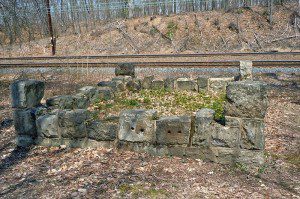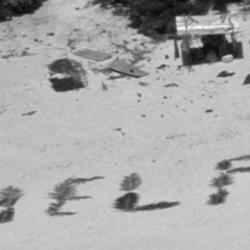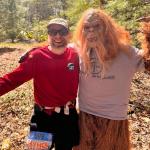The University of Pennsylvania is pretty old (by American standards), and with age comes ghost stories. But the ghost hunters of the Penn Ghost Project have still come up empty.
I do not believe in ghosts, but I’m still happy about this project:
“We want to understand it as a sociological reality and a cultural reality,” said Justin McDaniel, a professor and chair of the religious studies department at Penn. “It should be given a forum where people can talk about it.”
McDaniel’s group calls itself “the Penn Ghost Project” and later this semester, students will begin recording ghost stories on campus. The goal: to create an online ghost story archive for the ages.
“We want to kind of map out the ghosts at Penn, where are people saying they are,” said McDaniel, 42, a former Buddhist monk who isn’t sure whether he believes in ghosts. “If it goes well, we’ll start mapping the ghost history of Philadelphia, which is extensive, probably more extensive than any city in the country, just because it’s big and it’s old.”
I do not believe in ghosts, but I do believe in ghost stories. Searching for ghosts is bound to be a fruitless waste of time. But searching for ghost stories can be important and meaningful.
My alma mater is a few stops west of Penn on the R5 line. Eastern University has one decent campus ghost legend, but it’s basically a storytelling exercise working from a Hollywood template. The same is true for the much better ghost story across the street at Cabrini College.
But the best campus ghost story around here is even further west along the original Main Line railroad — at Immaculata University in Malvern. That story involves the ghosts of the workers who built that railroad — legends of spectral Irish laborers dancing in the woods.

That story, it turns out, is a genuine haunting. I don’t mean that actual ghosts are haunting those woods, but that the community had, for more than a century, remained haunted by the memory of an otherwise forgotten tragedy — and an otherwise forgotten crime. The memory of that crime was retained in folklore — in ghost stories.
And those ghost stories helped two Immaculata professors locate a mass grave. Duffy’s Cut, along the rails in the Malvern woods, is the burial site of 57 Irish immigrants. They landed in Philadelphia in 1832 and signed on as railroad workers with a contractor named Duffy. Six weeks later, they were all dead.
The historical marker (about 8 miles from where I’m sitting) says the men died in the cholera epidemic that swept through the area that year. That’s true, sort of. But as Janet Monge — an anthropologist from Penn who is studying the site — says, “If they had cholera, it didn’t kill them.”
Monge has found injuries on the bones of some of the workers — bashed skulls and axe wounds — that suggest these men met a violent end. A 2010 Smithsonian article notes that the workers likely tried to flee the area when cholera arrived: “When cholera swept the Philadelphia countryside in the summer of 1832, railroad workers housed in a shanty near Duffy’s Cut fled the area, according to Julian Sachse, a historian who interviewed elderly locals in the late 1800s. But nearby homeowners, perhaps fearful of infection … turned them away.”
It seems they did more than turn them away. It seems likeliest that after a few of the workers died from cholera, the rest were killed. Murdered, in fact. But we may never know the true story.
What we do know is that 57 men were buried, all at once, in an unmarked mass grave kept secret by the railroad company and almost entirely forgotten. The only record of the crime was preserved in folklore — in ghost stories and legends that circulated for more than a century and a half before those Immaculata professors took them seriously enough to start digging.
So I don’t expect the Penn Ghost Project to find any ghosts, but I’m glad they’re cataloging ghost stories, and looking for the stories behind them. American labor history is full of ghosts.
















